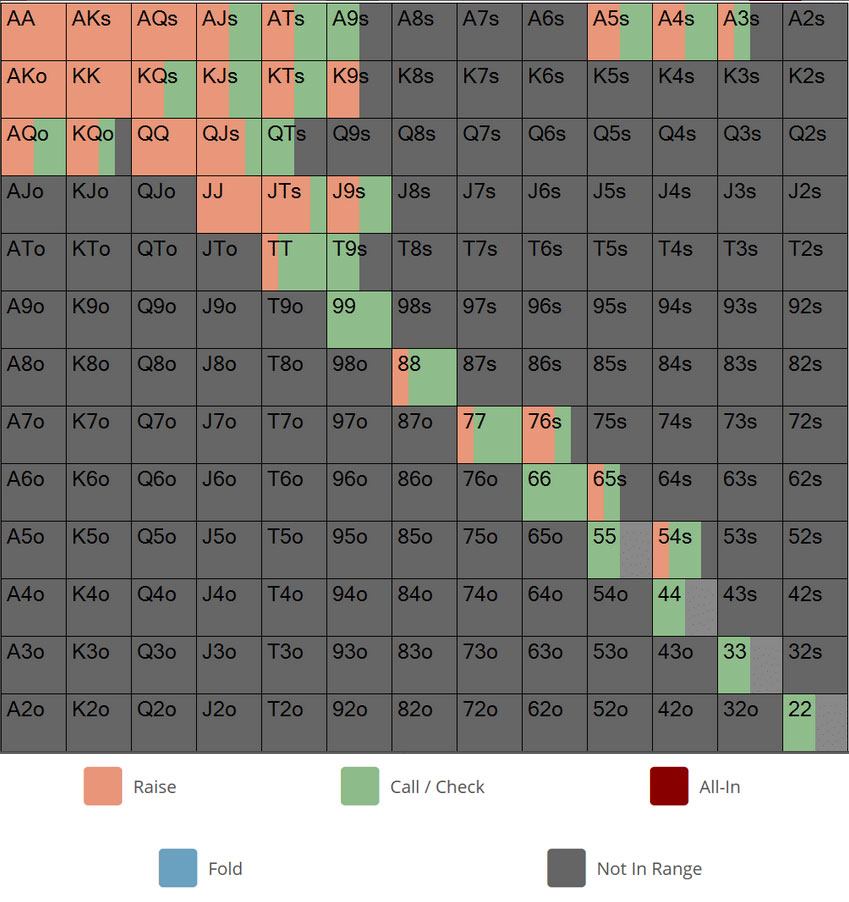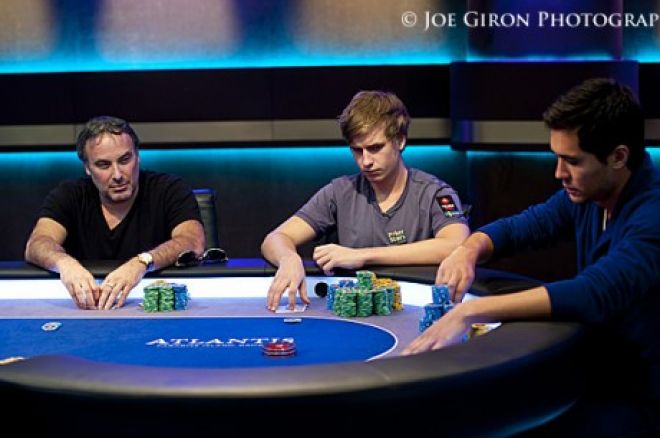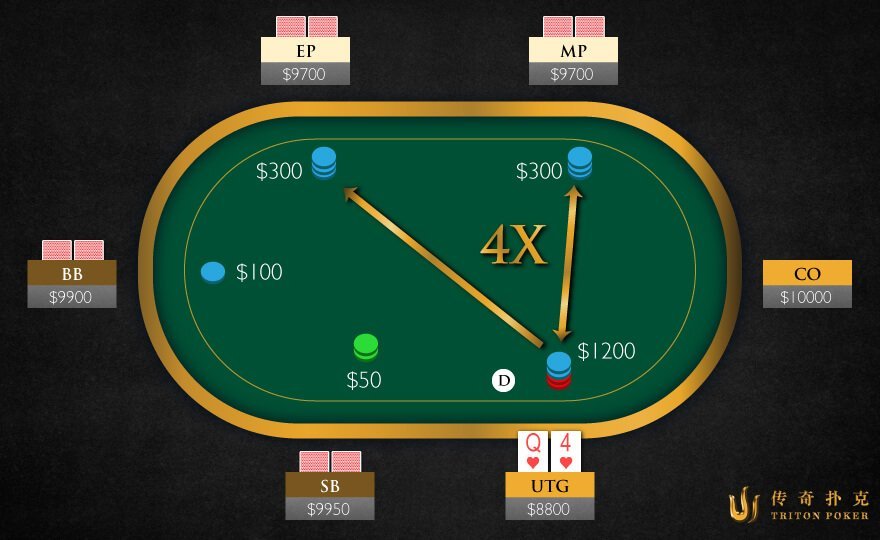Prefer training videos? SplitSuit has made an excellent all-in-one video guide to using the squeeze play as a bluff in FR and 6max cash games.
Squeeze Definition Poker
The Squeeze Play - Your Cards. While the poker squeeze play is independent of the hand you hold there is little point ‘wasting' a decent hand by using it to squeeze. If you have a good hand which may have some showdown value then there may be better ways to make use of this and your late position. The Squeeze Play - Summary. Squeeze Play Generally considered a preflop move — often a bluff — that occurs when a player reraises after there has been a raise and one or more callers. See also ' squeeze.' A B C D E F G. Squeeze Can refer to (1) looking at one's cards by slowly bending them back or (2) the act of reraising before the flop after there has been a raise and one or more callers (see ' squeeze play.
The 'squeeze play' is an advanced (usually pre-flop) move that can be used in both cash games and tournaments. The squeeze play can be very effective, but has to be used with caution.
What is a squeeze play?
A squeeze play is when you notice a loose player raising from early position and another player calling this raise before you. You then make a big re-raise and take down the pot.
So basically you are taking advantage of the loose raiser and the player who thought they could get away with calling the loose raise with a weaker hand than they would normally call with.
- The loose raiser can't call because they likely raised with a weak hand.
- The caller won't call because they were calling the first raise with a weak hand.
Can you see why this play works? I'll cover why the squeeze play works in more detail a little later on.
How to make a successful squeeze play.
The implementation of the squeeze play in poker is determined by the situation, not the cards.
You have to be able to read situations well when putting the play into practice, as it can otherwise prove to be costly. Therefore it is better to be able to understand how to use the play from the start, rather than taking a trial and improvement route.
Squeeze play example.
A typical situation for a squeeze play will occur when a loose-aggressive player opens for a raise pre-flop. Another player will then call this raise and the action comes to you. At this point you make a reraise or move all-in, causing both the initial raiser and caller to fold, allowing you to take down the pot. The basic layout is:
Player A: Raises
Player B: Calls
Player C: Re-raises All-in
Players A+B: Fold
Player C: Wins
There are other players at the table, but for the purposes of this example we will assume that they all folded before or after Player A raised.
No Limit Hold'em STT tournament - t50/t100 blinds - 6 Players
SB: t2,000
Hero (BB): t1,400
UTG: t2,000
MP: t2,000(loose-aggressive player)
CO: t2,600
BTN: t2,000

Pre Flop: (t150) Hero is BB with J T
1 fold, MP raises to t300, CO calls t300, 2 folds, Hero raises all-in t1,400, MP + CO folds.
Squeeze plays in cash games and when deep-stacked in tournaments.
When making a squeeze play in a cash game or in the early stages of a tournament you will likely be deep stacked, so going all in is not an option. However, it is still possible to make successful squeeze plays if you have strong reads on your opponent.
4 times the size of the initial raise is a good rule of thumb for the size of your reraise when making a squeeze play. Just be sure to be squeezing with hands that have potential (suited connectors and stuff like that) in case your squeeze gets called.
Mega millions results 2020. 2020 Archive; Mega Millions Numbers From 2020. Find a complete list of all Mega Millions numbers from 2020 on this page, starting with the most recent draw. You can see the size of the jackpot and whether it was won, as well as the Megaplier that was selected in each draw.

If your post-flop game isn't up to scratch, I would advise against squeezing when playing cash games or if deep-stacked in a tournament.
Why the squeeze play works.
The effectiveness of the squeeze play stems from Player A's table image.
Player B knows that A has been raising a lot pre flop which means that it is less likely that he is holding a premium hand. Therefore B decides that he can afford to call this raise with another mediocre hand because he may well be ahead and has position on Player A.
The second player calls the initial raise because they are aware that the loose raiser is unlikely to have a great hand.

Now when the action reaches Player C, he is aware that it is unlikely that either of the players have strong starting hands, so he goes all-in forcing both Player A and B into a decision for all their chips with mediocre hands. Player A folds because he is only strong enough to raise and not call, and Player B folds because he only wanted to call the size of Player A's raise to see the flop.
Player A folds because they raised with a weak hand, and player B folds because they called with another mediocre hand under the belief that player A was weaker than them.
As you can see, the cards that Player C holds is irrelevant to the outcome of the play. The move was employed successfully because Player C was able to accurately read the situation and act upon it. Now before you start thinking 'that sounds simple enough', there are a few other factors that are involved in making this play work.
Tips for using the squeeze play.
Reads on the other players.
Your reads on the players left to act behind you are just as important as your reads on the players doing the raising and calling. You have to be fairly sure that you won't run into another player acting behind you that will call your all in, otherwise you will be in a very hairy situation.
This is why it is easier to make this play when in a later position as there is less of a chance of bumping into another player that does hold a premium hand. So by keeping the number of players left to act behind you to a minimum, you are increasing the play's rate of success.
Table image.
Your own table image plays a very important role. If you have been involved in a number of pots and have been making a few plays, you are not in a good position to make a squeeze play in Texas Hold'em. The idea is to make your opponents think you have a big hand, forcing them to fold.
Therefore if your opponents have noticed that you have been making moves with marginal hands in the lead up to this play, it decreases the credibility of your raise and they are more likely to call. The play will have a higher rate of success if you employ it only when you have a tight table image.
The size of your re-raise.
Another important factor is the size of your re-raise. The re-raise must be large enough to be able to push both your opponents off their hand, which is why the re-raise is usually an all in.
Your re-raise is most effective as an all-in (as long as you are not deep stacked).
If you are sitting with a short stack and the size of your all in is only going to be 2 or 3 times the size of the original raise, then it is very unlikely you are going to make either of them fold as you are giving them odds to call with most hands. As a rule of thumb you want your all-in to be at least 5 times the size of the original raise for this play to be effective.
One last point.
Squeeze Poker Term
A key note to point out is that the combined total of the blinds and raises should be worth fighting for. If you are in the early stages of an MTT then there is no point is making an all-in squeeze play because you will be risking your tournament life for a very small pot.
So the size of the pot must be big enough to fight for, but small enough so that your opponents won't be priced in to call your all-in.
Poker squeeze play evaluation.
The success of a squeeze play is determined by the accuracy of your reads on your opponents.
All you need to make the play work is; one loose raiser, one loose caller, and one strong all in. This play will be a very strong addition to your game, but it should be used sparingly to help keep its credibility intact.
Go back to the awesome Texas Hold'em Strategy.
Comments
Squeezing Range
There's not an absolute squeezing range because, as with any other poker concept, it will depend mostly on our opponents' tendencies but if we were to give a standard, we will start by saying that a very wide range is worth squeezing.
Pai gow poker free online game. First of all, let's consider our position at the table. It is often better to squeeze out of position than in position. The reason is quite simple: when in position, we have a great advantage over our opponents, so playing our hand and see the flop is not always a bad idea; on the other hand, when we are out of position, we give up the positional advantage to our opponent. By squeezing, though, we take the initiative, and we put our opponent in a situation where he have to take a difficult decision to make.
Our squeezing range should be made up by two different categories of hands:
1) Strong hands that don't play well multi-way, but do in a 3-bet pot. Fundamentally, we're talking about middle/high pocket pairs (TT+). Those hands lose value when playing in a multi-way pot, and there are lots of flops that could scare us. Plus, callers often play small pocket pairs when set-mining, and we don't want to give them the possibility to hit their hands cheaply.
2) Hands with a blocker. A card is considered a 'blocker' when it limits the possible combination of a given range. For example, if we hold an Ace, we are decreasing the possibility that our opponents holds strong aces (AQ+, AA). So, Ax and Kx are good hands to squeeze.
Against opponents who tend to fold to 3-bet, we can use even a larger range, because they're going to give up a lot of hands. Of course, that doesn't mean squeezing with any two cards; in fact, there are hands that show most of their profit in multi-way, small pots – like medium suited connectors or low pocket pair, for example.
Opponents to Squeeze
As already said, the best players to squeeze, especially in a ‘bluff' situation, are those that fold to a 3-bet a lot. If an opponent never folds to a 3-bet, there is no point in squeezing him with a bluff; in this case, we should open up our value squeeze range – including hands like 88-KJ+ – because those kind of opponents are very easy to value bet.

Pre Flop: (t150) Hero is BB with J T
1 fold, MP raises to t300, CO calls t300, 2 folds, Hero raises all-in t1,400, MP + CO folds.
Squeeze plays in cash games and when deep-stacked in tournaments.
When making a squeeze play in a cash game or in the early stages of a tournament you will likely be deep stacked, so going all in is not an option. However, it is still possible to make successful squeeze plays if you have strong reads on your opponent.
4 times the size of the initial raise is a good rule of thumb for the size of your reraise when making a squeeze play. Just be sure to be squeezing with hands that have potential (suited connectors and stuff like that) in case your squeeze gets called.
Mega millions results 2020. 2020 Archive; Mega Millions Numbers From 2020. Find a complete list of all Mega Millions numbers from 2020 on this page, starting with the most recent draw. You can see the size of the jackpot and whether it was won, as well as the Megaplier that was selected in each draw.
If your post-flop game isn't up to scratch, I would advise against squeezing when playing cash games or if deep-stacked in a tournament.
Why the squeeze play works.
The effectiveness of the squeeze play stems from Player A's table image.
Player B knows that A has been raising a lot pre flop which means that it is less likely that he is holding a premium hand. Therefore B decides that he can afford to call this raise with another mediocre hand because he may well be ahead and has position on Player A.
The second player calls the initial raise because they are aware that the loose raiser is unlikely to have a great hand.
Now when the action reaches Player C, he is aware that it is unlikely that either of the players have strong starting hands, so he goes all-in forcing both Player A and B into a decision for all their chips with mediocre hands. Player A folds because he is only strong enough to raise and not call, and Player B folds because he only wanted to call the size of Player A's raise to see the flop.
Player A folds because they raised with a weak hand, and player B folds because they called with another mediocre hand under the belief that player A was weaker than them.
As you can see, the cards that Player C holds is irrelevant to the outcome of the play. The move was employed successfully because Player C was able to accurately read the situation and act upon it. Now before you start thinking 'that sounds simple enough', there are a few other factors that are involved in making this play work.
Tips for using the squeeze play.
Reads on the other players.
Your reads on the players left to act behind you are just as important as your reads on the players doing the raising and calling. You have to be fairly sure that you won't run into another player acting behind you that will call your all in, otherwise you will be in a very hairy situation.
This is why it is easier to make this play when in a later position as there is less of a chance of bumping into another player that does hold a premium hand. So by keeping the number of players left to act behind you to a minimum, you are increasing the play's rate of success.
Table image.
Your own table image plays a very important role. If you have been involved in a number of pots and have been making a few plays, you are not in a good position to make a squeeze play in Texas Hold'em. The idea is to make your opponents think you have a big hand, forcing them to fold.
Therefore if your opponents have noticed that you have been making moves with marginal hands in the lead up to this play, it decreases the credibility of your raise and they are more likely to call. The play will have a higher rate of success if you employ it only when you have a tight table image.
The size of your re-raise.
Another important factor is the size of your re-raise. The re-raise must be large enough to be able to push both your opponents off their hand, which is why the re-raise is usually an all in.
Your re-raise is most effective as an all-in (as long as you are not deep stacked).
If you are sitting with a short stack and the size of your all in is only going to be 2 or 3 times the size of the original raise, then it is very unlikely you are going to make either of them fold as you are giving them odds to call with most hands. As a rule of thumb you want your all-in to be at least 5 times the size of the original raise for this play to be effective.
One last point.
Squeeze Poker Term
A key note to point out is that the combined total of the blinds and raises should be worth fighting for. If you are in the early stages of an MTT then there is no point is making an all-in squeeze play because you will be risking your tournament life for a very small pot.
So the size of the pot must be big enough to fight for, but small enough so that your opponents won't be priced in to call your all-in.
Poker squeeze play evaluation.
The success of a squeeze play is determined by the accuracy of your reads on your opponents.
All you need to make the play work is; one loose raiser, one loose caller, and one strong all in. This play will be a very strong addition to your game, but it should be used sparingly to help keep its credibility intact.
Go back to the awesome Texas Hold'em Strategy.
Comments
Squeezing Range
There's not an absolute squeezing range because, as with any other poker concept, it will depend mostly on our opponents' tendencies but if we were to give a standard, we will start by saying that a very wide range is worth squeezing.
Pai gow poker free online game. First of all, let's consider our position at the table. It is often better to squeeze out of position than in position. The reason is quite simple: when in position, we have a great advantage over our opponents, so playing our hand and see the flop is not always a bad idea; on the other hand, when we are out of position, we give up the positional advantage to our opponent. By squeezing, though, we take the initiative, and we put our opponent in a situation where he have to take a difficult decision to make.
Our squeezing range should be made up by two different categories of hands:
1) Strong hands that don't play well multi-way, but do in a 3-bet pot. Fundamentally, we're talking about middle/high pocket pairs (TT+). Those hands lose value when playing in a multi-way pot, and there are lots of flops that could scare us. Plus, callers often play small pocket pairs when set-mining, and we don't want to give them the possibility to hit their hands cheaply.
2) Hands with a blocker. A card is considered a 'blocker' when it limits the possible combination of a given range. For example, if we hold an Ace, we are decreasing the possibility that our opponents holds strong aces (AQ+, AA). So, Ax and Kx are good hands to squeeze.
Against opponents who tend to fold to 3-bet, we can use even a larger range, because they're going to give up a lot of hands. Of course, that doesn't mean squeezing with any two cards; in fact, there are hands that show most of their profit in multi-way, small pots – like medium suited connectors or low pocket pair, for example.
Opponents to Squeeze
As already said, the best players to squeeze, especially in a ‘bluff' situation, are those that fold to a 3-bet a lot. If an opponent never folds to a 3-bet, there is no point in squeezing him with a bluff; in this case, we should open up our value squeeze range – including hands like 88-KJ+ – because those kind of opponents are very easy to value bet.
The players we don't want to squeeze are those inclined to 4-bet; against them, it's better to tighten up our squeeze range, squeezing only our best holdings and calling with the bottom of our value range.
Defending Against a Squeeze Play
Squeeze Poker O Que E
The best defense against the squeeze, especially at micro limits, is to fold. Our opponents won't squeeze often enough, so it doesn't affect our win rate significantly. Against frequent squeezers, the best defense is to tighten our opening range, because 1) we will be less often set up to a squeeze; 2) we will have a range mostly made up of value hands that we should be more willing to play it back.
Squeeze Hands Poker
If an opponent raises, we cold-call, and another opponent squeezes … Well, in this case, we've already announced that our hand is not so strong (unless we are playing a monster in a tricky way). So, in this case it's better not to defend.
Squeeze In Poker
Test your knowledge with our short quiz below

